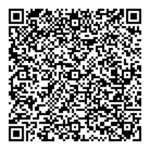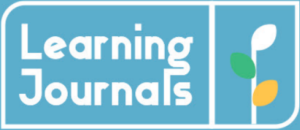
Across East Ayrshire Early Years staff are all embarking on the Learning Journals journey where the plan is to create a more consistent and collaborative way to document and track our youngest children’s learning,
A preferred approach is to use lived story principles but what does this look like in reality?
Below are steps to use when working in 3-5 playrooms.
Lived Stories
The lived story idea comes from Frobelian practice with the idea of telling life stories and using this as an approach to document children’s experiences as they play. 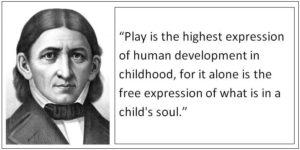 The ‘Lived Stories’ approach involves narrative observations that are addressed directly to the child. With the idea these observations are shared and discussed with the child.
The ‘Lived Stories’ approach involves narrative observations that are addressed directly to the child. With the idea these observations are shared and discussed with the child.
Key findings from using this approach are that it;
- Supports practitioners to deepen their thinking and understanding,
- Provides a rich platform for knowledgeable and nurturing educators to empower children’s reflection on their learning experiences.
- Allows practitioners to become more knowledgeable about what they were doing and why.
- Supports practitioners to move beyond personal reflection and find the actual learning that is taking place.
Getting Started
Firstly ensure your Learning Journals Nursery Manager/Supervisor has ticked and enabled the correct Curricula.
- EAC Early Level monitoring and tracking milestones
Some children may be using the following but if need be these will be identified.
- EAC Being Me
- EAC HWB tracker for Complex Needs
- Curriculum for Excellence – First Level

Writing Learning Journals
A journal is a story, a written account, a diary or a record of thoughts, observations and ideas.
In using our digital learning journals the first heading states – What were they doing? This is where we should be writing this written account, this observation, as a narrative to the child.
You should write to the child and praise them for their achievements. Write exactly what they were doing – their actions, the emotions they expressed and the exact words they used. Remember words refer to non-verbal as well – what are they telling us.
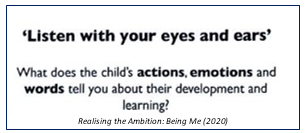
Example
Leia you spent about half an hour at the writing table today and you took your time to carefully choose the different coloured pencils, pens and sticky labels that you wanted to use. You then told us you were going to write a letter to your Mum, I could see you were very excited to do this. You wrote some marks on the page which were your own ‘letters’ and you then asked me to write some words which you copied brilliantly and even wrote your name very neatly at the end – fantastic writing, well done. Leia you also used scissors to cut some square shapes out of paper and you said "I’m making a stamp to put on my letter". You then drew a picture of King Charles on your stamp and proudly showed this to everyone at the table. I couldn’t believe how much it looked like him. Brilliant drawing Leia!
What did I learn? In this section you should use statements from the Monitoring and Tracking tool for LIT/MNU and HWB and CfE I can statements for other areas. This could potentially be developed into a story as we become more familiar with the Learning Journal format.
![]()
Monitoring and Tracking Tool can be found at https://www.shorturl.at/shortener.php
Use statements from Tracking and Monitoring Tool such as;
I can write my own name and/or other words correctly. I can recognise a variety of signs and labels within the environment. I am beginning to see the link between 2D shapes and 3D objects. I can create images using different materials e.g. coloured pencils.
At Step 2
Next choose CfE outcomes and these should link to the What did I learn? statements.
Here are some outcomes linked to the example paragraph above;
- LIT 0-21a – I can copy letters and words / I know function of writing is to convey meaning
- LIT 021b – I can experiment with mark making materials / I can write my name
- MTH 0-16a – I can identify 2D shapes and create pictures using shapes. EXA 0-02a I have the freedom to discover and choose ways to create images and objects using a variety of materials.
- EXA 0-02a – I have the freedom to discover and create images and objects using a variety of materials.
Choose maybe 2 or 3 outcomes perhaps 4 maximum to track per observation.
Each of these are then tracked using the Red (Beginning To) Amber (Making Good Progress) and Green (Achieved). Your Learning Journals manager or supervisor can change the titles of these by going to Config / Tracking / Tracking Keywords.
![]()
Step 3 – Progression Pathways
These are if you wish to break down chosen pathways of the curriculum further however we do not need to use these at this point.
Step 4 – Preview and Publish
At this point you should check over all the details including spelling, children’s names, check you have considered the actions, emotions and words and ensure you have written a meaningful lived story to the child.
Good practice is to use the Publish Later function and select a date agreed by your line manager – this could be Friday at 3pm or another agreed day and time. This ensures all journals are published simultaneously so all parents and carers receive updates at the same time too and this also gives time for management to review journals.
Next you should click Finish.

And so…
Hopefully this has given an insight or at least a starting point for those of you beginning the Learning Journals journey. This is an example of how you could approach the observation process not a must do guide. Please let us know your thoughts on this guide and also if you have some insights on improving the process we would love to hear them.
Good luck in your observational journey using lived story principles in your learning journals.
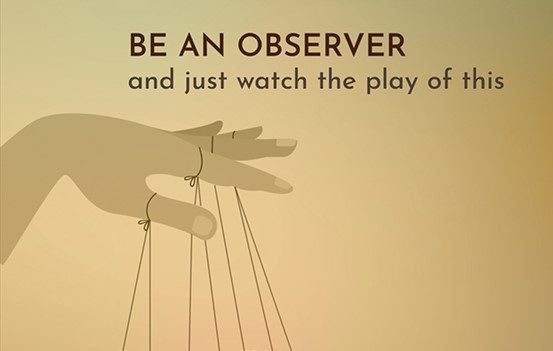
By Carol Rennie

